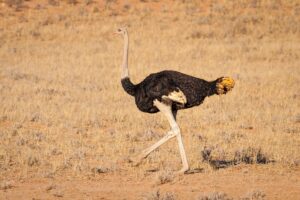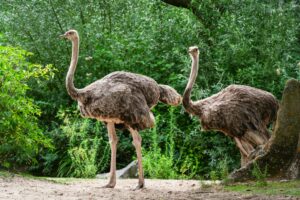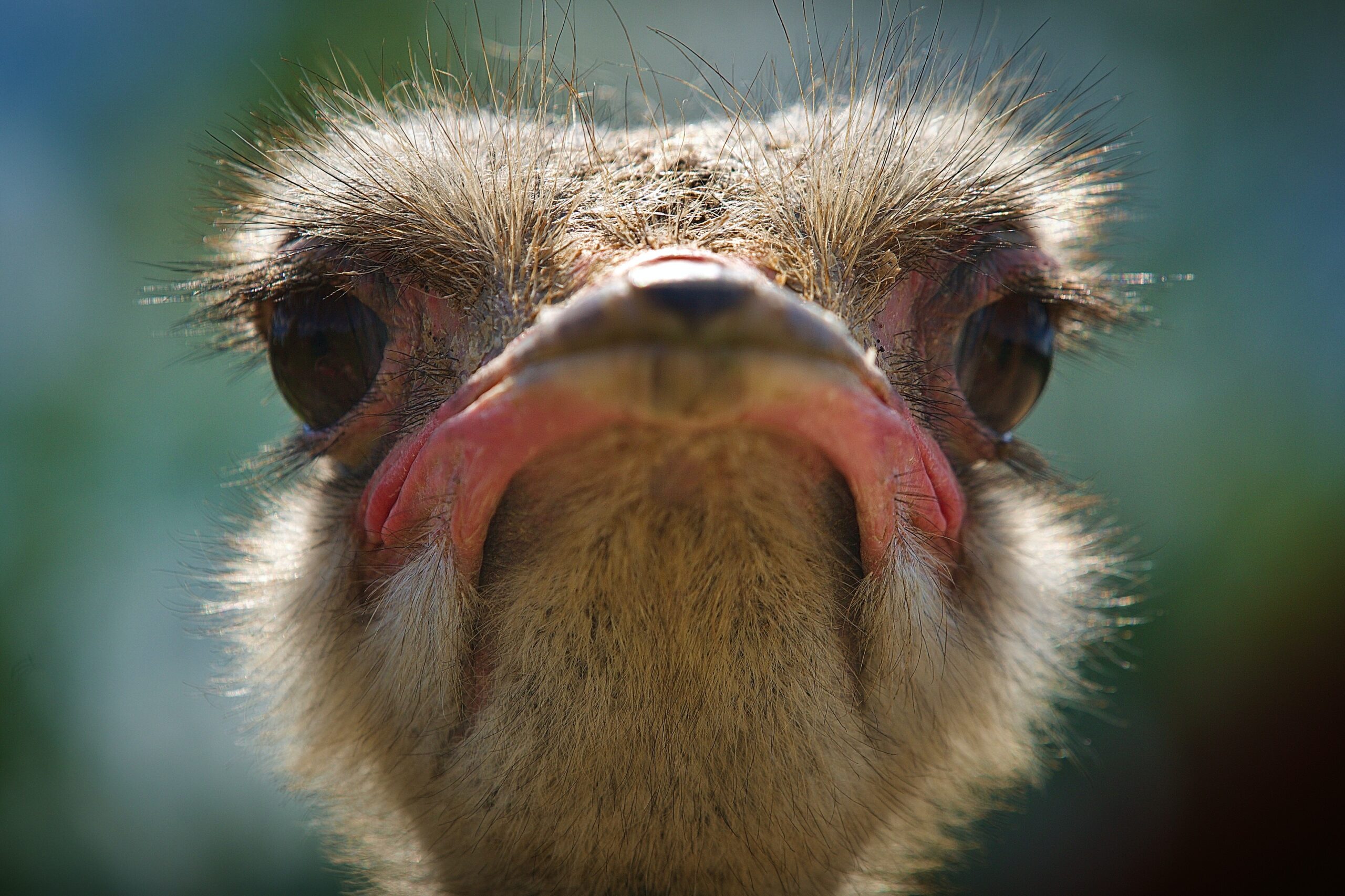Ostriches, the largest and heaviest birds on our planet, are a testament to the marvels of nature. These magnificent creatures belong to the ratite family, a group of flightless birds that includes emus, cassowaries, kiwis, and rheas. Ostriches, however, stand out not only for their size but also for their fascinating behaviors and adaptations. Let’s take a closer look at these incredible birds and explore the various aspects of their lives.
Physical Characteristics of Ostriches:

They are native to Africa, particularly in savannas and desert lands. They are recognized for their long necks, powerful legs, and striking black and white plumage. Despite their inability to fly, they are remarkably fast runners, capable of reaching speeds up to 45 miles per hour (72 km/h). Their large eyes, the largest among all land animals, provide them with excellent vision, essential for spotting predators from afar.
Adaptations for Survival:
Ostriches have evolved unique adaptations to survive in their harsh habitats. One such adaptation is their ability to withstand high temperatures. They can regulate their body temperature by altering the blood flow to their skin, helping them cope with extreme heat. Additionally, ostriches have powerful legs equipped with two toes, enabling them to cover large distances in search of food and water.
Diet and Feeding Habits:
The birds are omnivorous, meaning they consume both plants and animals. Their diet includes seeds, roots, fruits, insects, and small animals like rodents and lizards. Their strong beaks allow them to peck at food items or dig for roots and insects. Ostriches also have a unique digestive system with a gizzard that helps them grind down tough plant material.
Breeding and Reproduction:

Ostriches follow a fascinating mating ritual. During the breeding season, males compete for the attention of females by engaging in elaborate displays, including dancing and feather fluffing. Once a pair forms a bond, the female lays eggs in a communal nest, which is a shallow pit dug in the ground. Ostrich eggs are the largest of any bird species and are incubated by the dominant female during the day and by the male at night.
Economic Significance:
Apart from their ecological importance, ostriches hold economic value for humans. Ostrich farming has gained prominence for their meat, which is lean and low in fat, and their skin, which is used to make high-quality leather products. The feathers and eggs of ostriches are also utilized in various crafts and artistic endeavors.
Conservation Status:
While they are not currently considered endangered, their populations face threats from habitat loss, poaching, and climate change. Conservation efforts are crucial to ensure the survival of these remarkable birds and the preservation of their natural habitats.
In conclusion, ostriches are more than just fascinating creatures; they are a testament to the diversity of life on Earth. Their unique adaptations, behaviors, and economic significance make them a subject of great interest for scientists, conservationists, and nature enthusiasts alike. By understanding and appreciating these majestic birds, we can contribute to their conservation and the protection of our planet’s rich biodiversity.

